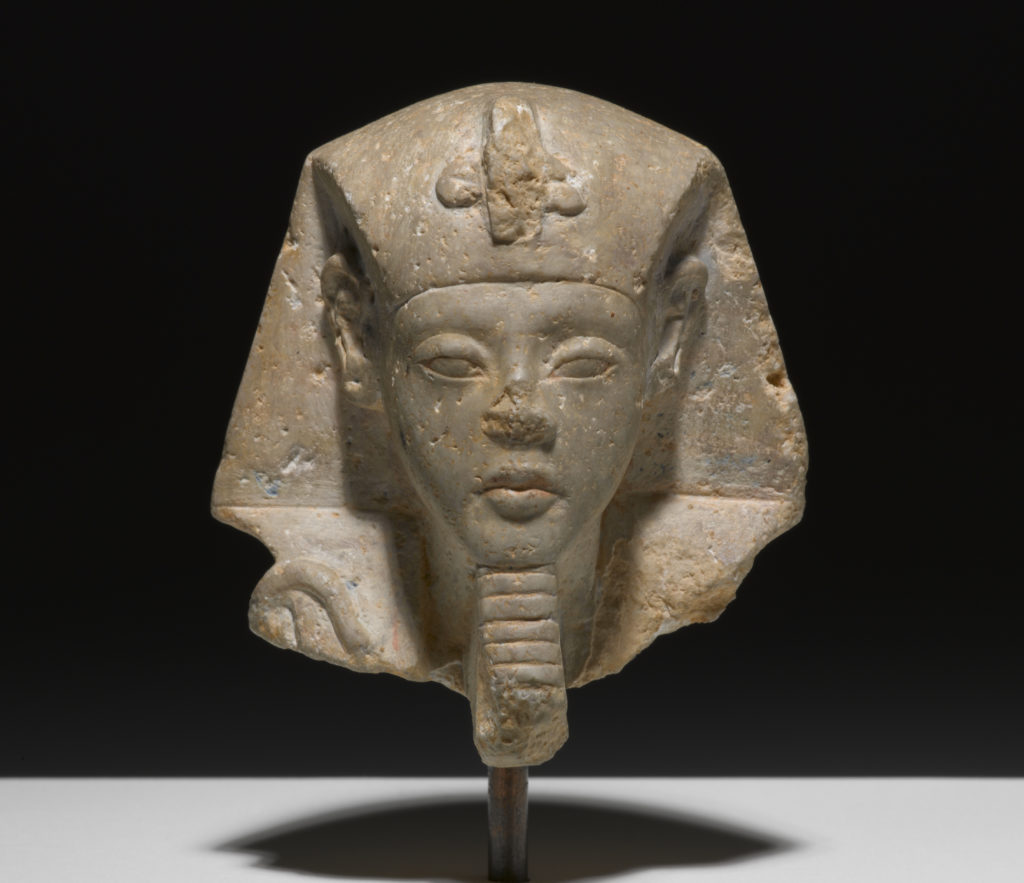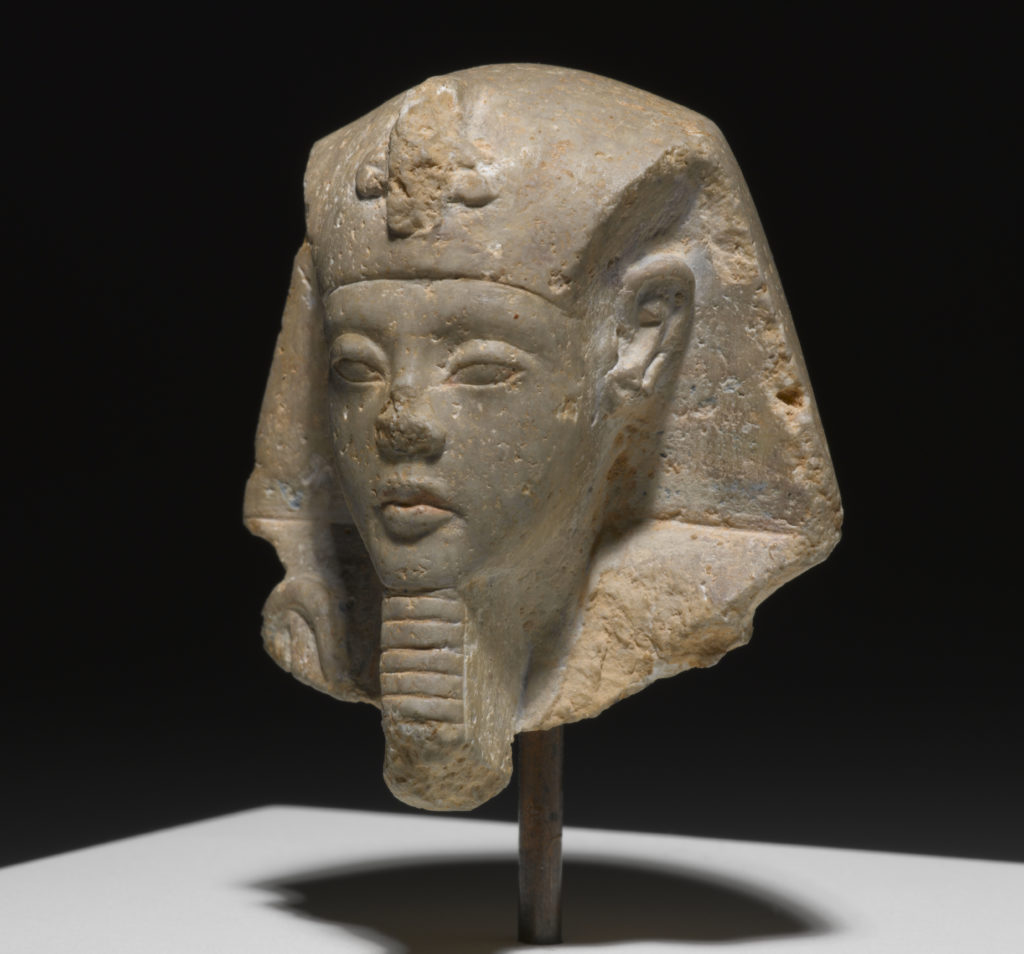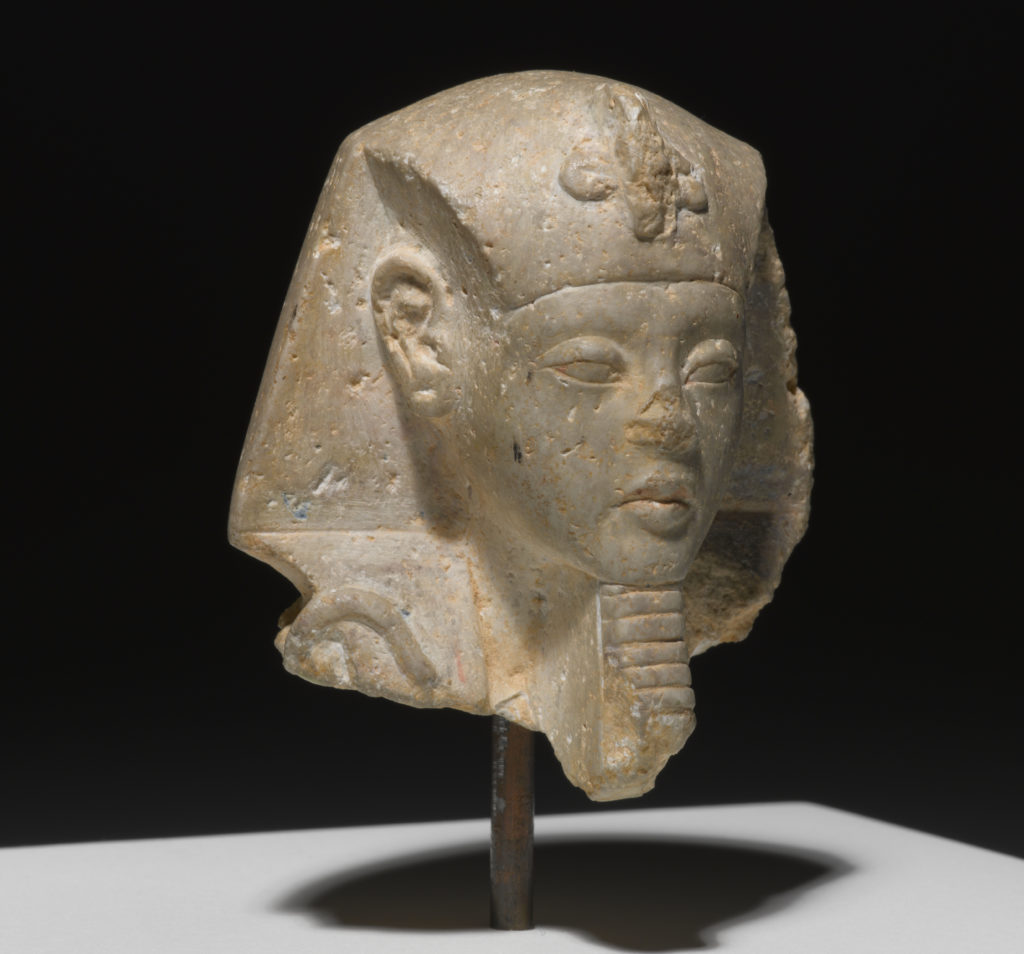Head from a Shabti of Akhenaten (work of art)
Artwork Info
Key Ideas
- This head from a shabti was made for the tomb of the pharaoh Akhenaten (ah-ken-nah-ten). It wears a headdress featuring the Uraeus, a symbol of royalty that represents the goddess Wadjet. Pharaohs were often shown with a crook (a shepherd’s hook) and a flail (a tool used with grain), symbols that represent the god Osiris. The top of a crook is on the right shoulder.
- A shabti is a small human figure, usually a mummiform (shaped like a mummy), that was placed inside a tomb. Shabtis were believed to serve magical purposes by performing manual labor for the deceased in the afterlife.
- Akhenaten changed Egyptian religion from polytheistic (many gods and goddesses) to monotheistic, focusing on the sun god Aten. He created a new capital called Akhetaten (now an archaeological site called Amarna) and changed the style for depicting members of the royal family.
- Despite this change, the existence of shabti fragments of Akhenaten shows that some funerary traditions and a belief in the afterlife persisted during his reign. Shabtis were connected to Osiris, a “banned” deity under Akhenaten’s rule, yet they were still used for Akhenaten’s burial.
- It is believed that Akhenaten was the father of Tutankhamen, called “King Tut” in popular culture. King Tut rejected Akhenaten’s religious beliefs. During his reign he changed Egyptian religious traditions back to what they were before Akhenaten came into power.
Learn More
In the sixth year of his reign, Akhenaten enforced drastic changes to the religion that had been practiced for centuries in ancient Egypt. He changed the worship of many gods and goddesses to the worship of a single sun god named Aten, and he required all Egyptians to practice this new religion. Akhenaten furnished his tomb at el-Amarna in the traditional way, simply and without any references to Osiris and other funerary deities. At least 200 shabtis were prepared for his burial, but none of them have been found completely intact. After Akhenaten’s reign, King Tut changed the religion of Egypt back to the traditional worship of many deities. Those who ruled Egypt after Akhenaten had his monuments taken down, to reuse the building materials and to erase his memory. Reliefs of Akhenaten and inscriptions that honored him were also destroyed.
Additional Resources
Resources for Teachers
- Read about shabtis of Akhenaten at the Metropolitan Museum of Art.
- Learn more about Akhenaten’s Mysteries of Religious Revolution.
- Go deeper with this read on the Amarna period.
Resources for Students
- Read about the Amarna period.
- Enjoy resources about the Amarna period.



